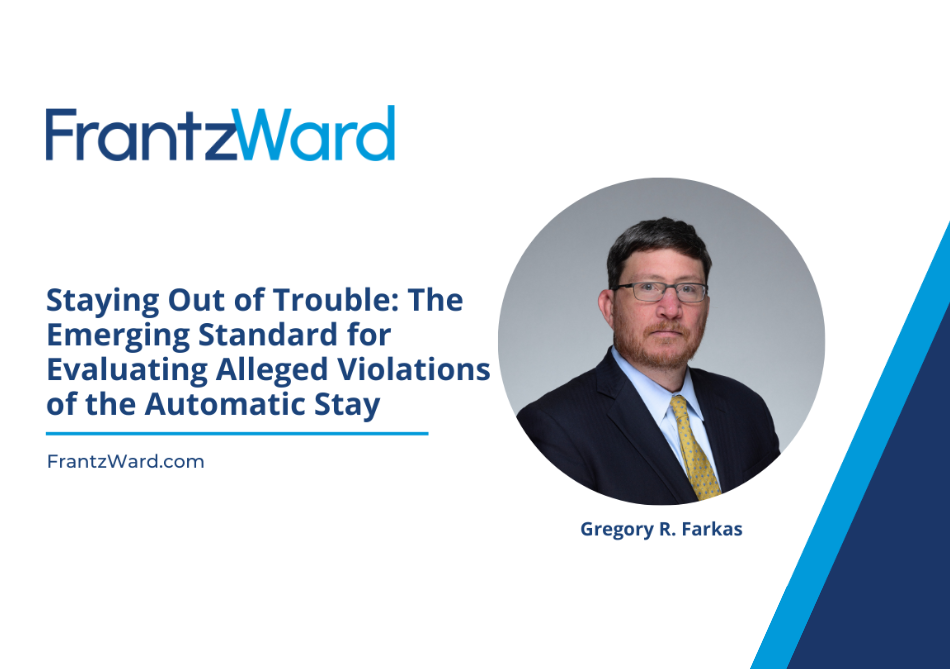Staying Out of Trouble: The Emerging Standard for Evaluating Alleged Violations of the Automatic Stay
Finding out that a customer or supplier has filed for bankruptcy can be stressful. However, the immediate and natural reaction to “do something” can often create more problems.
Immediately upon the filing of a bankruptcy petition, an automatic stay comes into effect that prevents persons from taking any action to exercise control over property of the debtor’s estate. 11 U.S.C. § 362. The purpose of the automatic stay is to maintain the status quo and prevent the dismemberment of the estate by the individual actions of creditors.
Both “exercise of control” and “property of the estate” are terms of art under the Bankruptcy Code, and the automatic stay prohibits a wide range of conduct that might not initially be obvious to anyone other than a bankruptcy attorney. Violations of the automatic stay can lead to clams for attorneys’ fees, actual damages, and punitive damages, making allegations of automatic stay violations a frequent subject of litigation in bankruptcy. Fortunately, a recent decision by an Ohio bankruptcy court offers parties greater protections from automatic stay violation claims.
Harker v. Eastport Holdings, LLC (In re GYPC, Inc.), 634 B.R. 983 (Bankr. S.D. Ohio 2021) involved an alleged violation of the automatic stay against a corporate debtor. After receiving notice of the bankruptcy filing, the defendant wrote a letter to the debtor notifying it of a shortfall in a contractual working capital requirement. The mere act of writing the letter was a violation of the automatic stay.
The bankruptcy court turned to the appropriate remedy for the violation. The court first noted that because the debtor was a corporation rather than an individual, attorney’s fees and statutory damages were not available under 11 U.S.C. § 362(k). Although the majority of courts have reached the same conclusion, this is a point that is sometimes missed by debtors and defendants to automatic stay violation claims.
Because 11 U.S.C. § 362(k) was not applicable, the bankruptcy court held that the debtor could only recover damages if it showed that the defendant could be held in civil contempt. The court then applied the Supreme Court’s decision in Taggart v. Lorenzen, 139 S. Ct. 1795 (2019) and held that the defendant could only be found in civil contempt if there was “no fair ground of doubt” that the defendant’s conduct violated the automatic stay. No fair ground of doubt is defined as “when there is no objectively reasonable basis for concluding that the creditor’s conduct might be lawful…” Taggart, 139 S. Ct. at 1801. The bankruptcy court found that under this standard, the defendant’s conduct in sending the letter, while a violation of the stay, was not so objectively unreasonable that damages and attorneys’ fees could be awarded.
Taggart involved a violation of a bankruptcy discharge injunction, and courts around the country have split on whether the no fair ground of doubt standard applies to alleged violations of the automatic stay. In re GYPC, Inc. apparently is the first case within the Sixth Circuit to apply the standard to stay violations. While it remains to be seen whether other courts within the Sixth Circuit will follow the bankruptcy court’s lead, for now the In re GYPC, Inc. decision provides parties with greater protection from stay violation claims.


